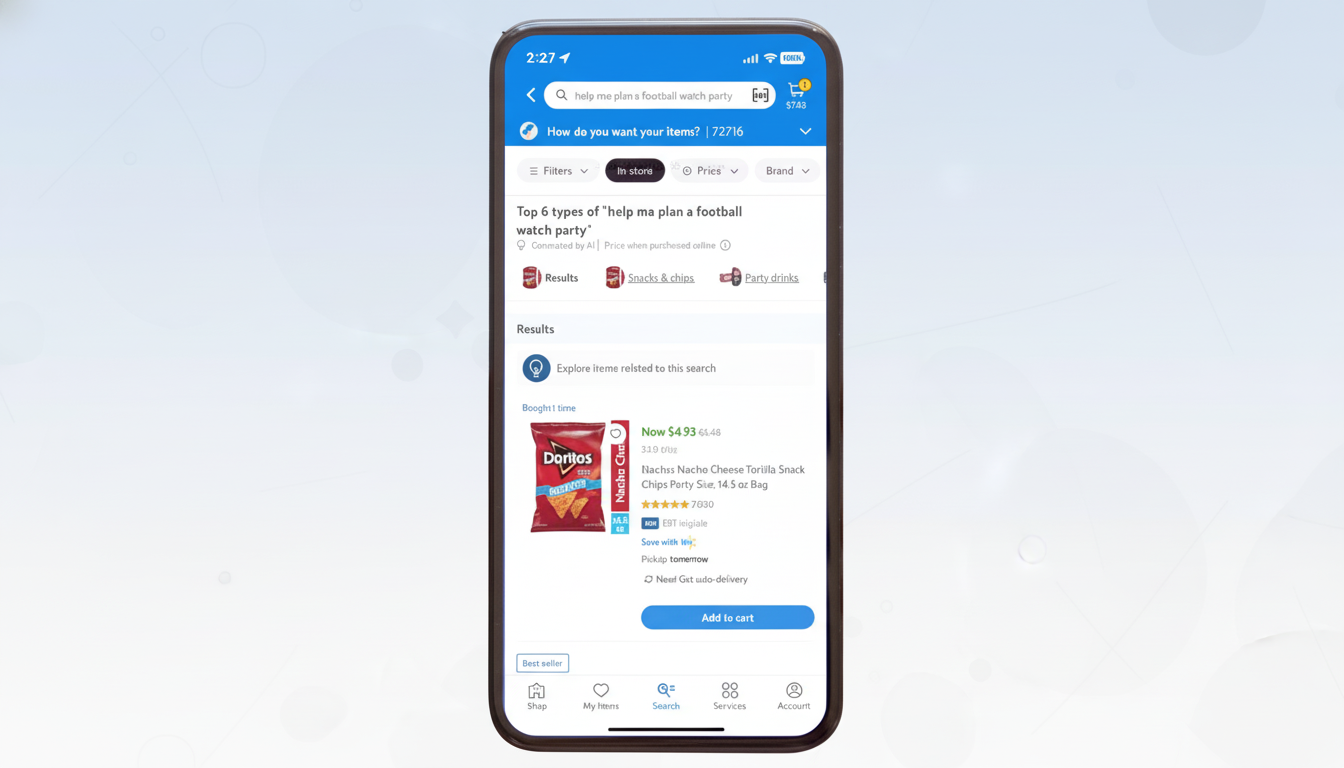I fed my Walmart order to ChatGPT’s new Atlas browser, and its Agent mode hijacked the screen to browse the site and construct a cart for me. It was an actual order with real money and a same-day delivery window — the kind of high-stakes task that tests whether an AI agent can move beyond novelty value and offer real utility.
Creating Atlas And Relinquishing Control
Atlas already ships for Mac, with Agent mode available to Plus and Pro subscribers. The setup was simple: I imported my Chrome data, turned on Apple Keychain (Atlas is using Apple’s system to store your browser and website account data), agreed to let Atlas keep me signed in, and turned on Agent. Then I communicated a blunt order: Go ahead and buy wood putty, paintable caulk and 2-inch screws from Walmart with delivery.
- Creating Atlas And Relinquishing Control
- Teaching the Agent My Shopping Preferences at Walmart
- What Worked and What Didn’t During Atlas Walmart Test
- How It Compares to DIY Shopping Without an Agent
- Privacy and Safety Considerations for Agent Shopping
- Where This Is Headed for Atlas and Retail Agents
- Conclusion On Atlas Agent For Walmart Orders

The agent seized control of my tab and I, along with my cursor, and promptly ran into a couple of classic ecommerce speed bumps. For the first click path, the barrier was a language-selection pop-up, and because I wasn’t signed in to Walmart on Atlas yet — and that’s what was creating my cookies — the site did not know who I was or where my store was. This meant that inventories and delivery options were unclear, and the agent stalled.
And that’s your classic problem of dependency. Retail pages gate crucial context — store information (or simply ZIP code), delivery slot availability — behind login or location detection. Without it, even a good agent can’t confidently choose in-stock items for the right channel of fulfillment.
Teaching the Agent My Shopping Preferences at Walmart
After signing in and pinning my local Walmart — Malone, NY — I narrowed the instruction to: five wood putty, five paintable caulk, and a one-pack of 2-inch screws that could be delivered within an hour from the store. The agent scoured, filtered and even started placing items into a cart for me — but not of my regular brands.
One more nudge fixed that. I instructed it to also use my shopping history to match previous products. The agent opened Walmart’s order history, found the specific brands I buy and swapped its initial selections. At checkout, it paused for the steps that should remain human: to set a delivery window, leave a tip, pay. The entire process lasted about 10 minutes, from prompt to near-purchase.
The behavior aligns with what OpenAI has demonstrated in its demos—agents can parse instructions, navigate complex page hierarchies, and finish multistep tasks—but real-world frictions such as pop-ups, session state, and retailer-specific idiosyncrasies still need human shepherding.
What Worked and What Didn’t During Atlas Walmart Test
Let’s start with strengths: the agent was accurate, once I gave context and permission to read my Walmart history. It identified the most commonly purchased items, selected the right package sizes and steered clear of out-of-stock varieties. And it managed pagination and category filters without straying.
State-centric weaknesses and interruptions. The agent stumbled on modal pop-ups, and it required explicit instructions to mine past orders: I was asked if I wanted to see items that I had previously bought. That’s consistent with industry data: At Baymard Institute we have for years observed how overlays, mandatory account checks and geolocation-based gating turn shoppers off their retailer’s site, contributing to high cart abandonment rates close to 70%, on average. An agent can dampen that, but only if the agent maintains steady session context and a sturdy way to ward off pops.
There’s also the trust factor. And as research by Nielsen Norman Group reveals, automation surprises (such as actions that users didn’t expect) erode trust. Atlas largely sidesteps the problem by rendering each step so you can see the cursor, review selections and interrupt if something seems wrong. That visibility can be important when an AI is shopping on your behalf.
How It Compares to DIY Shopping Without an Agent
Could I have done it the human way fast? Most likely, especially because I’ve memorized both the aisle logic of Walmart’s site and my go-to SKUs. But the value proposition here is not in raw speed but offloading cognitive load. While Atlas worked, I had to do nothing but come back when it was time to check out and exert my effort toward validation as opposed to search, filter and compare.

In areas where marketplace intermediaries don’t exist, direct-to-retailer facilitators may be a relatively quiet unlock. Walmart receives hundreds of millions of visits a week at its stores and on apps and websites, and same-day delivery depends on accurate inventory at the store level. The most boring part of this process can be eliminated by agents that respect retailer rules while browsing those inventories.
Privacy and Safety Considerations for Agent Shopping
It is worth thinking hard about giving an agent access to your logged-in sessions and password manager. I restricted permissions to one profile, left payment confirmation manual and monitored the process. That matches the advice of security researchers: use least-privilege access, keep human-in-the-loop credentials for financial approval tasks and go over activity logs whenever you can.
Fortunately, Atlas also made it easy to pause and regain control.
The remaining question is how they’ll grapple with ecommerce’s darker corners, such as aggressive upsells or confusing substitutions. Consumer advocates and regulators have sounded the alarm bells about manipulative patterns at checkout; an agent must be trained how to recognize and avoid them.
Where This Is Headed for Atlas and Retail Agents
Agent shopping becomes more interesting when you add constraints:
- Budget ceilings
- Nutrition targets
- Cost-per-ounce comparisons
- Loyalty points
- Delivery windows
McKinsey predicts generative AI alone could unlock trillions of dollars in economic value as automatable tasks like these fall by the wayside. Grocery and general merchandise are ready for it because they marry structured catalogs with repeat buys.
My next rounds of tests will add in a holiday toy list, with ratings floors, hard budget and preferred brands interpreting all the data. If Atlas can reliably marry purchase history to live inventory and price rules, it’s a real concierge, not just an elaborate macro.
Conclusion On Atlas Agent For Walmart Orders
Atlas seemed to be half magic, half micromanagement. Excelled after I set the table — login, store, history — and it remained transparent every step of the way. It flubbed on pop-ups and couldn’t depend on my brand preferences until I told it to. That’s okay for an initial release, and it’s already good enough for routine carts.
For now, consider Atlas Agent a competent assistant who just requires a brief rundown and your ultimate sign-off. With more judicious control of site modals, deeper memory of a user’s preferences and broader platform availability it could be part of the everyday shopping toolkit, rather than just something to demo.

